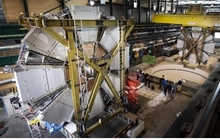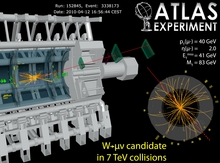Research Interests:
ATLAS Experiment
My primary focus is the ATLAS experiment -- a large high energy particle physics detector system developed by a collaboration of physicists from around the world to study very-high-energy proton-proton interactions at the LHC at CERN. This experiment will probe the origins of electroweak symmetry breaking and the particles associated with that new physics (such as the Higgs Boson, discovered at the LHC in 2012) that must appear at energies at the symmetry breaking scale. Since that discovery, the emphasis of research at the LHC has been on discovering new physics beyond the Standard Model. The Boston University group has been working on the precision muon measurement system since the beginning of ATLAS. The group’s research continues to exploit that muon system, looking for new particle states that decay to high transverse momentum muons that are predicted in various “beyond the Standard Model” theories. I am mainly involved in developing the computing infrastructure, both hardware and software, needed to process the large (100 Petabytes) data sets accumulated by the ATLAS experiment. For the last two years, I have also been a program director at the National Science Foundation
Education:
- B.S. in Physics, Oakland University
- Ph.D. in Physics, University of California, Berkeley
In the news:
- Research Professor Jim Shank elected Computing Coordinator for the ATLAS experiment
- Professors Ahlen, Lane, Shank and students discuss the LHC in The Daily Free Press
Research Descriptions:
The ATLAS Experiment at CERN
The ATLAS experiment is a large detector system developed by a collaboration of physicists from around the world to study very-high-energy proton-proton interactions at the Large Hadron Collider (LHC) at CERN, a laboratory for high energy physics near Geneva, Switzerland. Boston University personnel were involved in the construction and installation of the muon detectors for ATLAS. The detectors occupy a region the size of a five-story building and measure the trajectories of muons in a magnetic field with a precision of better than 1/10 of a millimeter. This permits precise determination of the muon momentum which is an important ingredient in searches for new phenomena at the TeV energy scale. Boston University has also played a leading role in the development of computing and analysis tools.
 Physics (Internal)
Physics (Internal)


